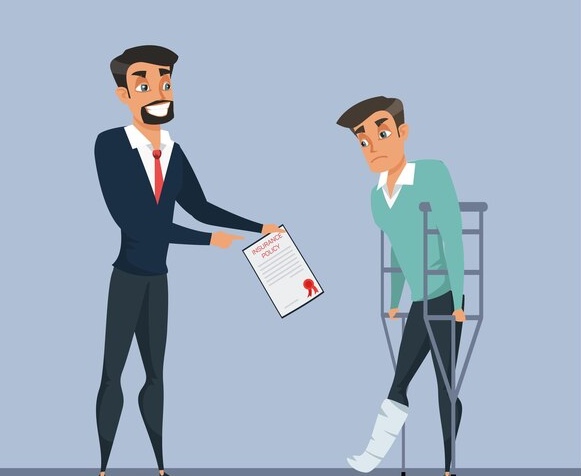Experiencing a personal injury can be overwhelming, and knowing the right steps to take afterward is crucial. This guide will walk you through the necessary actions to protect your rights and ensure you receive the compensation you deserve. We’ll break down each step in simple terms, providing tips, examples, and clear guidance to help you navigate the process.
Understanding Personal Injury: What It Means
Before into the steps, it’s important to understand what personal injury means in legal terms. Personal injury refers to any harm or injury caused by someone else’s negligence or wrongful actions. This section will explain the basics in simple terms.
Key Points:
- Definition: Personal injury is a legal term that covers physical, emotional, or psychological harm caused by another party.
- Examples: Common examples include car accidents, slip and fall incidents, medical malpractice, and workplace injuries.
- Importance of Legal Action: Understanding personal injury is essential for taking the right legal steps to protect your rights.
Immediate Steps to Take After an Injury
The moments following an injury are critical. Knowing what to do can make a big difference in the outcome of your case. Here’s a step-by-step guide to what you should do immediately after an injury occurs.
Immediate Actions:
- Ensure Safety: Move to a safe location if possible to prevent further injury.
- Call for Help: Contact emergency services if needed, especially in serious situations.
- Check for Injuries: Evaluate your condition and that of others involved.
- Stay Calm: Remaining calm will help you think clearly and take the right steps.
Documenting the Incident
Accurate documentation is essential for strengthening a personal injury case. This section explains how to gather and organize important information right after the injury.
| What to Document | How to Document It |
|---|---|
| Photographs of the Scene | Take clear photos of the location, any hazards, and visible injuries using your phone. |
| Witness Information | Get contact details from anyone who saw the incident happen. |
| Details of the Incident | Write down exactly what happened, including the time, place, and circumstances. |
| Injury Symptoms | Keep a journal of any symptoms or pain you experience after the incident. |
Tips:
- Document everything as soon as possible while details are fresh in your mind.
- Organize all evidence in a folder or digital file for easy access later.
Seeking Medical Attention
Getting medical attention immediately after an injury is vital, both for your well-being and for supporting your legal case. This section covers the steps to take when getting medical help.
Steps to Take:
- Visit a Doctor: Even if you think your injuries are minor, see a healthcare professional to get a thorough check-up.
- Follow Medical Advice: tick to your doctor’s prescribed treatment plan to aid your recovery and strengthen your case.
- Keep Medical Records: Save all documents related to your treatment, including doctor’s notes, prescriptions, and bills.
- Track Your Progress: Monitor your recovery and report any changes in your condition to your healthcare provider.
Reporting the Injury
It’s important to report the injury to the relevant parties officially. This section explains who you need to notify and how to do it.
| Who to Report To | How to Report |
|---|---|
| Employer (for workplace injuries) | Notify your employer as soon as possible, following company procedures. |
| Property Owner (for slip and fall) | Inform the owner or manager of the property where the injury occurred. |
| Police (for car accidents) | File a police report if the injury resulted from a car accident or any other criminal activity. |
| Insurance Company | Contact your insurance provider to inform them of the incident. |
Tips:
- Make your report in writing when possible so there is a clear record.
- Keep copies of all reports for your records.
Consulting a Personal Injury Lawyer
After you’ve taken the initial steps, consulting a personal injury lawyer is essential to understanding your legal options.
What to Look for in a Lawyer:
- Experience: Choose a lawyer with experience in handling personal injury cases similar to yours.
- Track Record: Look for a lawyer with a proven history of successful outcomes.
- Communication: Your lawyer should be easy to talk to and keep you informed throughout the process.
- Fee Structure: Understand how the lawyer charges (e.g., contingency fee, hourly rate) before hiring.
Steps to Take:
- Research Lawyers: Search for personal injury lawyers online or seek recommendations from trusted sources.
- Schedule Consultations: Meet with a few lawyers to discuss your case and see who you feel most comfortable with.
- Ask Questions: Make sure to ask about the lawyer’s experience, approach, and fees during your consultation.
- Make Your Choice: Choose the lawyer who you feel is best suited to handle your case.
Understanding Your Legal Rights
Knowing your rights is crucial after a personal injury. This section breaks down the basic legal rights you have as an injury victim.
| Your Rights | What They Mean |
|---|---|
| Right to Compensation | You may be entitled to compensation for your injuries, lost wages, and other related expenses. |
| Right to Legal Representation | You have the right to hire a lawyer to represent you in your personal injury case. |
| Right to a Fair Trial | If your case goes to court, you have the right to a fair and impartial trial. |
| Right to Privacy | Your personal information and medical records should be kept confidential throughout the process. |
Tips:
- Ask your lawyer to explain your rights in detail so you fully understand them.
- Be aware of any deadlines for filing a claim (statute of limitations).
Filing a Personal Injury Claim
Filing a personal injury claim is the formal process of seeking compensation for your injuries. This section explains how the process works and what you need to do.
Steps to Filing a Claim:
- Gather Evidence: Collect all documentation, including medical records, witness statements, and photos of the injury.
- Draft a Demand Letter: Your lawyer will help you write a demand letter to the responsible party, outlining the details of your injury and the compensation you seek.
- Submit the Claim: Your lawyer will submit the Claim to the responsible party or their insurance company.
- Negotiate: Often, the responsible party will offer a settlement. Your lawyer will negotiate on your behalf to get the best possible outcome.
Example of a Demand Letter Structure:
| Section | Content |
|---|---|
| Introduction | Briefly explain the incident and state your intent to seek compensation. |
| Injury Details | Describe your injuries, treatment received, and ongoing medical issues. |
| Evidence | Summarize the evidence supporting your claim, including witness statements and medical records. |
| Compensation Sought | Clearly state the amount of compensation you are seeking. |
| Conclusion | Reaffirm your intent to resolve the matter through compensation. |
Dealing with Insurance Companies
Dealing with insurance companies is a crucial aspect of the personal injury process. This section offers valuable tips on how to navigate these interactions effectively.
Dos and Don’ts:
- Do: Be honest in your communications. Provide accurate information about the incident and your injuries.
- Don’t: Accept the first settlement offer without consulting your lawyer.
- Do: Maintain thorough records of all interactions with the insurance company, including emails, letters, and phone conversations.
- Don’t Sign anything without having your lawyer review it first.
Tips:
Keep in mind that insurance adjusters represent the insurance company, not you. Their objective is to reduce the amount they have to pay out.
- Let your lawyer handle negotiations with the insurance company to ensure you receive fair compensation.
What to Expect in the Legal Process
Understanding what to expect during the legal process can help reduce stress and prepare you for what’s ahead. This section outlines the typical steps in a personal injury case.
| Stage | Description |
|---|---|
| Initial Consultation | Meet with your lawyer to discuss the case and determine the best course of action. |
| Investigation | Your lawyer will investigate the details of the case, gathering evidence and interviewing witnesses. |
| Negotiation | Your lawyer negotiates with the opposing party to reach a settlement. |
| Litigation | If a settlement can’t be reached, the case may go to court, where both sides present their arguments. |
| Resolution | The case is either settled out of court or decided by a judge or jury. |
Settling Your Case
Most personal injury cases are resolved through settlements before reaching trial. This section outlines the settlement process and key factors to consider before accepting a settlement offer.
Settlement Considerations:
- Settlement Amount: Ensure the settlement covers all your medical expenses, lost wages, and other damages.
- Future Needs: Consider whether you might have ongoing medical needs or lost income due to the injury.
- Legal Advice: Always consult your lawyer before accepting a settlement to ensure it’s fair and meets your needs.
Final Considerations and Tips
As you move forward with your injury case, keep these final tips in mind to ensure you’re making the best decisions for your situation.
Tips:
- Stay Organized: Keep all documents, correspondence, and notes related to your case in one place.
- Be Patient: Personal injury cases can take time, especially if they go to trial. Patience is key.
- Trust Your Lawyer: Rely on your lawyer’s expertise and experience to guide you through the process.
- Focus on Recovery: While your attorney manages the legal matters, concentrate on your healing and overall well-being.
Conclusion
Navigating the aftermath of a personal injury can be challenging, but with the right steps, you can protect your rights and secure the compensation you deserve. By following the guidance in this article, consulting with a skilled lawyer, and understanding the legal process, you’ll be well-prepared to handle your personal injury case effectively.

